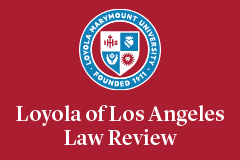Abstract
Lesbian, gay, bisexual, and transgender (LGBT) people have experienced a long and pervasive history of employment discrimination. Today, more than eight million people in the American workforce identify as LGBT, but there still is no federal law that explicitly prohibits sexual orientation and gender identity discrimination against them.
This Article begins by surveying the social science research and other evidence illustrating the nature and scope of the discrimination against LGBT workers and the harmful effects of this discrimination on both employees and employers. It then analyzes the existing legal protections against this discrimination, which include constitutional protections for public sector workers, court interpretations of Title VII’s ban on sex discrimination, state and local antidiscrimination laws, and corporate policies. This Article determines that, while these laws and policies provide important protection, the current system is incomplete, confusing, and inadequate. This Article next considers empirical research showing that employers do not offer employees with a same-sex spouse or partner the same access to family benefits that they offer to employees with a different-sex spouse, and it examines court decisions finding that a denial of equal benefits is unlawful employment discrimination.
Based on this research and legal analysis, the Article concludes that a federal law like the Employment Non-Discrimination Act (ENDA), a bill pending in Congress that would prohibit sexual orientation and gender identity employment discrimination, is needed. To serve its purpose consistently, however, the bill’s current exemption of employee benefits should be removed. To be sure, ending all forms of unequal treatment based on sexual orientation or gender identity is warranted and feasible, and doing so will have positive effects for both employees and employers.
Recommended Citation
Jennifer C. Pizer, Brad Sears, Christy Mallory & Nan D. Hunter,
Evidence of Persistent and Pervasive Workplace Discrimination Against LGBT People: The Need for Federal Legislation Prohibiting Discrimination and Providing for Equal Employment Benefits,
45 Loy. L.A. L. Rev. 715
(2012).
Available at: https://digitalcommons.lmu.edu/llr/vol45/iss3/3


